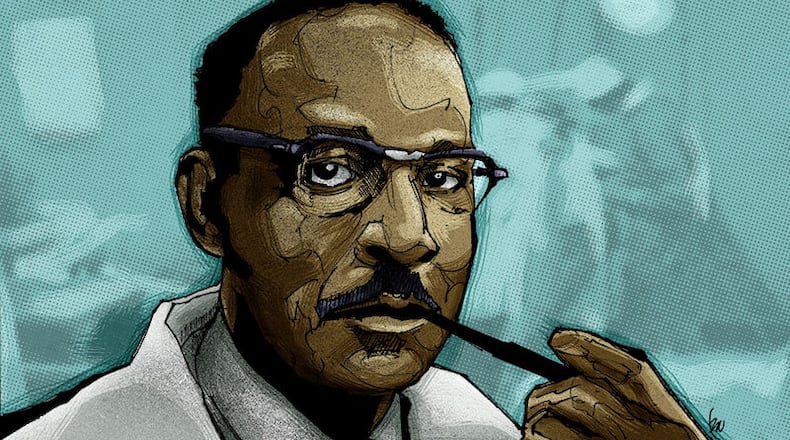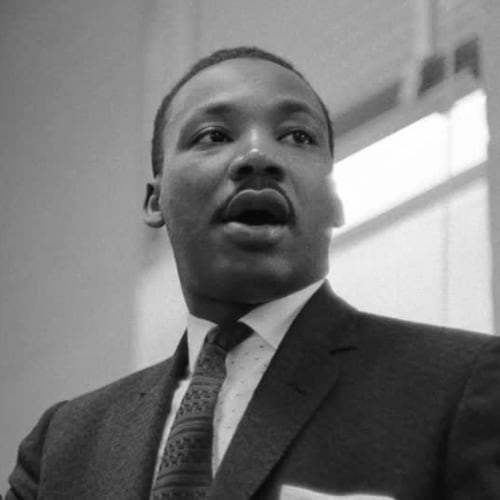Vivien Thomas designed groundbreaking surgical equipment, developed lifesaving surgical techniques and trained countless doctors. That’s impressive for anyone, but even more so for a Black man in the segregated South who never went to college, much less medical school.
Born Aug. 29, 1910, in New Iberia, Louisiana, Thomas was the son of a carpenter and grandson of a slave. He grew up in Nashville, Tennessee, graduating from high school with honors in 1929.
That, unfortunately, was also the year of the stock market crash, and all the money Thomas had earned as a carpenter’s apprentice and saved to attend college was gone in an instant.
A few months after being wiped out, Thomas found a job at Vanderbilt University as a lab technician, working with Dr. Alfred Blalock. Blalock was a University of Georgia graduate who earned his medical degree at Johns Hopkins University School of Medicine. Thomas had never been in a lab before, but his intelligence and curiosity impressed Blalock.
Within days, Thomas was “doing arterial punctures on the laboratory dogs and measuring and administering anesthesia,” Katie McCabe wrote in 1989. “Within a month, the former carpenter was setting up experiments and performing delicate and complex operations.”
Despite this, Thomas was classified as a janitor like the other Black employees. For $12 a week, Thomas worked 16 hours a day or more in the lab. But Thomas’ pay increased when he told Blalock he needed to be paid the same as other lab techs.
Blalock relied on Thomas, McCabe wrote. Blalock was “the scientist, asking the questions; Thomas the pragmatist, figuring out the simplest way to get the answers.”
“It was extremely difficult to tell if Dr. Blalock had the original idea for a particular technique or if it was Vivien Thomas,” Dr. Alan Woods Jr., a former intern at Johns Hopkins, told Corinne F. Hammett during an interview for News American. “They worked so smoothly together, we — the medical students — didn’t know.”
Their first breakthrough was in the treatment of traumatic shock, which Blalock had been researching for years. The technician and the doctor re-created in dogs the same trauma experienced by humans. Their discovery that shock was linked to a loss of fluid and blood saved the lives of countless soldiers during World War II.
But that was just the beginning for the lab partners.
Beginning of cardiac surgery
By this point, Thomas had married Clara Flanders, from Macon. Their first child, Olga Fay, was born in 1934, and a second daughter, Theodosia, arrived in 1938.
When Blalock was offered the chief of surgery position at Johns Hopkins Hospital in 1941, he accepted on the condition that Thomas come with him. It was there they made history, even though Thomas received no credit at the time.
In 1943, Dr. Helen Taussig approached Blalock about her research on “blue babies,” so called because small or obstructed passages from their heart prevented oxygen from entering the big pulmonary arteries that carry blood from the heart to the lungs.
Taussig wanted to find a way to “change the pipes around” to bring more blood to the babies’ lungs.
For more than a year, Thomas worked in the lab trying to re-create in dogs the malformations of the babies’ hearts and fix them.
The infants’ blood vessels were too small for the surgical equipment on hand, so Thomas cut down needles and sharpened them with an emery board. He created a new clamp to use on the tiny arteries.
Thomas wasn’t just gifted in creating equipment, however. He was a gifted surgeon. When Blalock saw the suturing technique Thomas performed in a dog, he declared, “Vivien, this looks like something the Lord made.”
At the time, heart surgery was unheard of. But Thomas, Blalock and Taussig were undeterred. About a year after they began their research, they performed the first operation on a “blue baby.” Doctors filled the gallery to witness history.
Blalock had his lab tech Thomas stand behind him on a stepstool so that throughout the surgery, he could get Thomas’ guidance on technique.
It was the beginning of cardiac surgery.
On Dec. 31, 1945, Time magazine ran an article about the surgery, touting the skills of Blalock and Taussig but never once mentioning Thomas. Photos of the surgical team excluded Thomas. A paper on the procedure in the Journal of the American Medical Association in May 1945 didn’t mention Thomas. Only those who saw the surgery knew of his contributions.
Unknown giant in Black community
Before long, however, Thomas was training Johns Hopkins surgeons in the delicate techniques necessary for heart and lung operations.
“To Blalock’s ‘boys,’ Thomas became the model of a surgeon,” Dr. Denton Cooley, who entered Johns Hopkins as a med student the same year Thomas was hired for the lab, told McCabe. “Dr. Blalock was a great scientist, a great thinker, a leader,” Cooley told McCabe, “but by no stretch of the imagination could he be considered a great cutting surgeon. Vivien was.”
In 1971, his former students commissioned a portrait of Thomas, and surgeons from around the country gathered to pay homage and hang the portrait in the Blalock Building at Johns Hopkins.
Thomas received a doctorate from Johns Hopkins in 1976, but it was an honorary doctor of laws. Restrictions prevented him from receiving a medical doctorate, but from then on he was addressed as Dr. Thomas.
Johns Hopkins medical school’s four colleges are named for “legendary former faculty members.” One of those is Thomas College.
“Medical historians have reflected that Vivien Thomas is perhaps the ‘most untalked about, unappreciated, unknown giant in the African American community,’” the Thomas College website states.
Thomas died on Nov. 26, 1985, of pancreatic cancer. He was 75.
If you would like to learn more about Thomas, HBO produced a movie titled, “Something the Lord Made,” starring Mos Def as Thomas and Alan Rickman as Blalock.
BLACK HISTORY MONTH
Throughout February, we’ll spotlight different Black pioneers ― through new stories and our archive collection ― each day in our Living and Metro sections. Go to AJC.com/news/atlanta-black-history/ for more subscriber exclusives on people, places and organizations that have changed the world, and to see videos on the African American pioneers featured here each day.
About the Author
Keep Reading
The Latest
Featured



